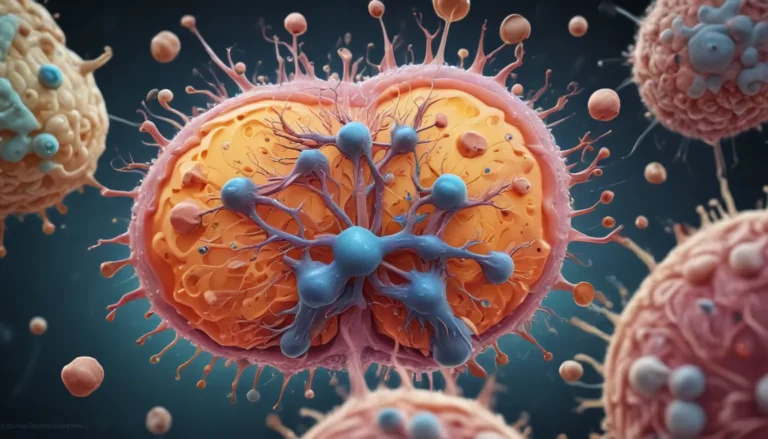A Note About Images: The images used in our articles are for illustration purposes only and may not exactly match the content. They are meant to engage readers, but the text should be relied upon for accurate information.
Welcome to the captivating world of photosynthesis, where plants harness the power of sunlight to fuel their growth and vitality. Central to this remarkable process are photosystems, intricate protein complexes that play a pivotal role in converting light energy into chemical energy. Join us as we embark on a journey to unravel the mysteries of photosystems and discover 15 fascinating facts that shed light on these essential components of life.
The Essence of Photosystem: A Beacon of Photosynthesis
Photosystem serves as the cornerstone of photosynthesis, a complex interplay of pigments, proteins, and molecules that capture and harness light energy. Through a series of intricate reactions, photosystem I and photosystem II work in harmony to facilitate the conversion of carbon dioxide and water into glucose and oxygen, crucial substances for plant growth and development.
Delving into the World of Photosystems: A Closer Look at 15 Intriguing Facts
-
Two Types of Photosystems: In the realm of photosynthesis, there exist two primary types of photosystems – Photosystem I (PSI) and Photosystem II (PSII). Together, they form a dynamic duo that drives the electron transport chain and paves the way for the production of ATP and NADPH.
-
Historical Discoveries: Photosystem I took the spotlight as the first photosystem discovered, initially believed to operate in isolation. However, in a groundbreaking revelation by Robert Emerson in 1957, Photosystem II emerged, revolutionizing our understanding of photosynthesis.
-
Evolutionary Insights: Surprisingly, Photosystem II predates Photosystem I in the evolutionary timeline, indicating the precedence of the oxygen-producing pathway over the electron transport for NADPH reduction.
-
Chlorophyll’s Chromatic Charm: Chlorophyll, the star pigment of photosystems, boasts specific absorption spectra and imparts the vibrant green hue to plants while absorbing light energy with precision.
-
Functional Dynamics: Photosystem II kickstarts the Z-scheme cascade of events by breaking down water molecules, releasing oxygen, electrons, and protons through the process of photolysis.
-
Energy Efficiency: Photosystem I excels in utilizing far-red light, contrasting with Photosystem II’s proficiency in absorbing light from the red and blue segments of the spectrum.
-
Reaction Center Revelations: The heart of each photosystem lies in the reaction center, where light energy undergoes a transformative conversion into chemical energy, facilitated by specialized chlorophyll molecules and associated proteins.
-
Chemical Catalysts: Photosystem I orchestrates the generation of NADPH, a critical player in glucose synthesis during the dark reactions of photosynthesis, by receiving electrons from Photosystem II through the electron transport chain.
-
Vulnerabilities of Photosystems: Photosystem II faces greater susceptibility to environmental stressors such as high light intensity, heat, and oxidative factors, which may compromise its functionality and impede photosynthetic efficiency.
-
Electron Flow Variability: Photosystem II showcases versatility in engaging both cyclic and non-cyclic electron flows, adapting its energy output to cater to the plant’s energy demands and environmental conditions.
-
Light-Harvesting Complexes: Embedded within the antenna systems of photosystems, light-harvesting complexes extend the wavelength range of captured light, enriching the photosynthetic repertoire of plants.
-
ATP Synthesis: Apart from generating electrons for the electron transport chain, Photosystem II spearheads the synthesis of ATP through chemiosmosis, a mechanism entwining electron flow with ATP production.
A Reverence for Nature: The Significance of Photosystem in Ecosystems
As we immerse ourselves in the intricacies of photosystems, a profound appreciation for the symbiotic relationship between light and life emerges. These astonishing revelations not only deepen our understanding of nature’s complexity but also underscore the interdependence of all living organisms in sustaining Earth’s ecosystems.
Nurturing Curiosity: FAQs About Photosystem Unveiled
- What is photosystem? – A complex arrangement of molecules within plant cells that catalyzes the conversion of light energy into chemical energy via photosynthesis.
- How many types of photosystems exist? – Two primary types, namely Photosystem I and Photosystem II, collaborate to power the photosynthetic electron transport chain.
- Where is photosystem located? – Nestled in the thylakoid membrane of chloroplasts, specialized organelles playing a pivotal role in photosynthesis.
- How does photosystem bolster plant growth? – By converting light energy into chemical energy vital for synthesizing sugars and nurturing plant development.
- Is photosystem exclusive to plants? – No, photosystem is omnipresent in photosynthetic organisms like algae and cyanobacteria, essential for their energy requirements.
Embracing Knowledge: A Testimony to Nature’s Splendor
The saga of photosystem unravels a tale of resilience, adaptability, and synergy, underscoring the indelible mark of photosynthesis on life’s continuum. As we delve deeper into the enigmatic realm of photosystems, let us cherish the wonders of our planet’s ecosystems and cultivate a shared ethos of preservation and stewardship for the environment we call home.
Uncover the spellbinding intricacies of photosynthesis with these captivating facts about photosystems that illuminate the essence of life’s energy cycle. Join us in celebrating the marvels of nature and unraveling the enigmatic world of photosystems with curiosity and reverence.






